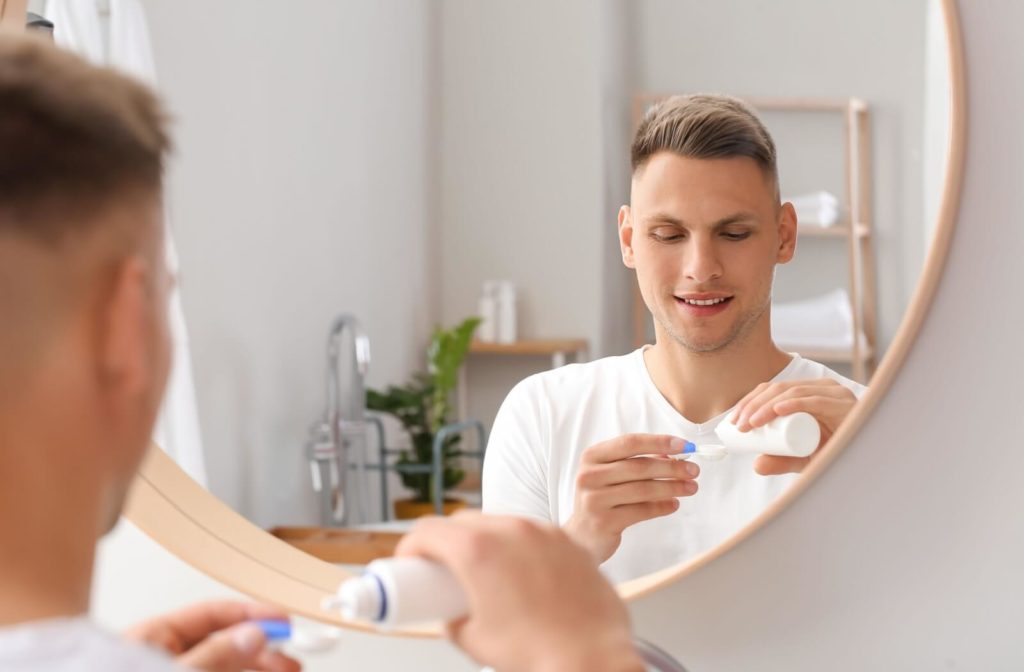Contact solution is a common product used for cleaning and disinfecting contact lenses. It is typically made up of a sterile saline solution with added preservatives to prevent bacterial growth. Eye drops, on the other hand, are specifically designed to lubricate and soothe dry eyes.
Many people wonder if contact solutions can double as eye drops in an emergency due to their similar appearance and purpose. However, this is not advisable. Contact solution is designed specifically for cleaning, disinfecting, and storing contact lenses, and its composition is different from that of eye drops, which are formulated to hydrate and soothe the eyes. While using contact solution in your eyes might not cause immediate harm, it may not provide the comfort or relief you’re seeking.
In some cases, it could even cause irritation or discomfort due to its chemical components. It’s always best to use products designated for their intended purpose—eye drops for dry or irritated eyes and contact solutions for maintaining your lenses. If you’re in need of eye drops and don’t have any on hand, it’s worth waiting or seeking proper products rather than risking potential irritation.
Why You Shouldn’t Use Contact Solution as Eye Drops
While contact solution may seem like a convenient substitute for eye drops, there are some important things to consider before using it:
Preservatives
Most contact solutions are formulated with preservatives designed to prevent bacteria and other harmful microorganisms from growing on your lenses. While this is essential for keeping your lenses clean and safe to wear, these preservatives can sometimes be harsh on the delicate tissues of your eyes, especially if you have sensitive eyes or are prone to irritation. Over time, frequent exposure to these preservatives may cause discomfort or even damage to the surface of your eyes.
Lubricants
Eye drops are specially formulated to include lubricating agents, such as glycerin, hyaluronic acid, or propylene glycol, which help to soothe and hydrate dry or irritated eyes. These ingredients mimic the natural properties of your tears, providing immediate relief and long-lasting comfort.
Contact solution, on the other hand, is not designed for hydration or soothing purposes. It lacks these lubricating agents, so it may not provide the same level of moisture or relief for dry eyes, leaving your eyes feeling even more uncomfortable.
pH Balance
The pH balance of contact solutions is carefully calibrated to clean and store your contact lenses, ensuring they remain safe for use. However, this pH level is different from that of eye drops, which are specifically designed to match the natural pH of your tears. Using contact solution in your eyes can disrupt this delicate balance, possibly leading to irritation, redness, or discomfort. Over time, this imbalance may interfere with your eye’s natural ability to maintain a healthy tear film.
Specific Eye Conditions
If you have a specific eye condition, such as allergies, dry eye syndrome, or an infection, using contact solution in place of eye drops can do more harm than good. Contact solution is not intended to address underlying medical conditions and may aggravate symptoms or delay proper treatment.
For instance, it may contain ingredients that trigger allergic reactions or fail to provide the therapeutic benefits needed to alleviate your symptoms. It’s always best to use treatments prescribed or recommended by an eye care professional for these conditions.
Safe Alternatives for Eye Moisturization or Irritation Relief
If you experience occasional dryness or irritation, there are safer and more effective alternatives to using contact solutions in your eyes. Consider using preservative-free artificial tears, which are specifically designed for lubrication and moisture without disrupting the pH balance of your tears. These drops come in convenient single-use vials or bottles and can be used as often as needed throughout the day.
For more severe or chronic conditions, your eye doctor may recommend prescription eye drops with targeted ingredients to address your specific concerns. They may also suggest lifestyle changes to improve overall eye health, such as staying hydrated, taking frequent breaks from digital screens, or using a humidifier in dry environments.
Prioritize Your Vision with Expert Eye Care Tailored to You at Bayside Eye Care
While it may be tempting to use contact solution as a substitute for eye drops, it’s important to remember that these products are not interchangeable. Contact solution is designed for cleaning and disinfecting contact lenses, while eye drops are specifically formulated to provide relief for dry or irritated eyes. To ensure the health and comfort of your eyes, it’s best to use these products as intended and seek proper medical advice if needed.
At Bayside Eye Care, we understand how important your vision is to live a full and vibrant life. Our team of dedicated and experienced optometrists is here to listen to your concerns, understand your unique needs, and provide personalized solutions to support your eye health. Whether you’re seeking relief from discomfort, clearer vision, or guidance on preventative care, we are committed to helping you every step of the way.
Contact us today to schedule an appointment and take a meaningful step towards healthier, more comfortable eyes.



